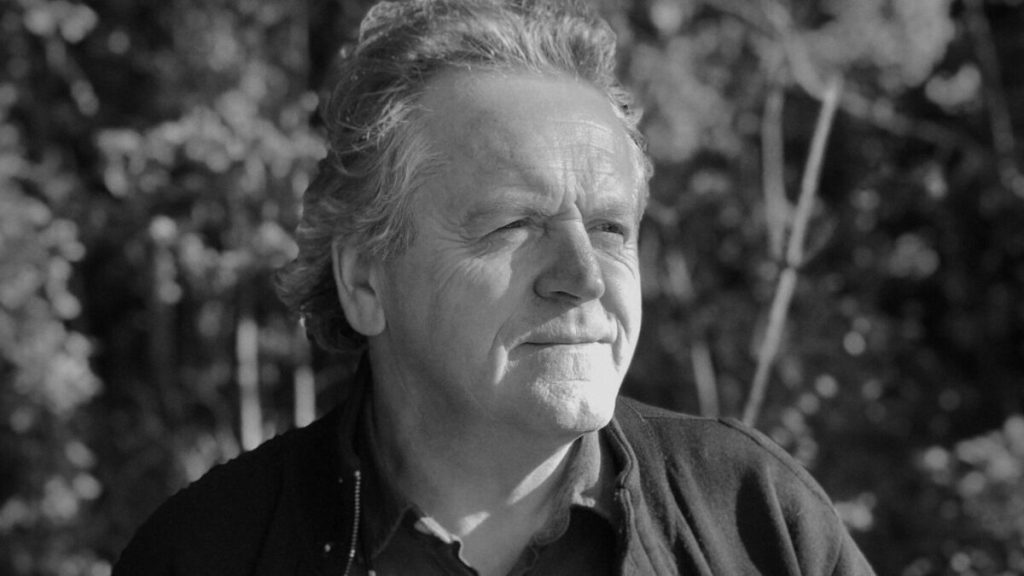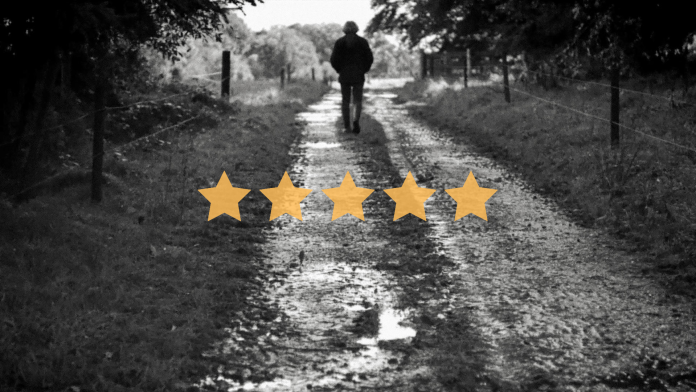The saddest and most heartbreaking stories are usually the simplest told. In The Days of Trees, Tomás Hardiman recounts the entries from his old childhood journals. They’re pieces of memories once hidden and repressed, their meaning only rediscovered through psychotherapy. This is the harrowing tale of Hardiman’s experience with sexual abuse.
★★★★★
TW: Sexual abuse, religious abuse
Hardiman is an excellent example of modest success within the entertainment industry. He has a long-spanning career in theatre, film production and cultural event management; a true champion of the arts. No one would suspect him to have been a victim of sexual abuse—not even himself. But that’s the story he vulnerably tells in Alan Gilsenan’s latest documentary, The Days of Trees. The disturbing revelation of his grooming was catalysed by sessions with his psychiatrist, who was helping him understand the meaning behind diary entries detailing a dream he had written as a child. This opened the floodgates of memories for a time in his life when he was groomed and sexually abused by a Christian Brother.
The Days of Trees is very delicate in its approach to the incident, yet still straightforward. It begins by recounting Hardiman’s childhood, his relationship with his father and mother, and the experience of growing up in a Christian community. The picture lacks colour, with black and white filters over scenes of Hardiman’s interview and old household paraphernalia. There’s a distinct feeling of something amiss evoked by these visuals, even more penetrating in the archival footage of Hardiman’s childhood. It’s as if life and innocence have been stolen from the images of this young little boy, a jarring sensation that helps to convey the disconnect he feels as a victim of childhood sexual abuse.

One of the most poignant stylistic choices featured in the film is in the moment when Hardiman finally talks about the event itself. There’s an incessant tapping of pencil against clipboard lingering through the scene, emulating the imagery of his psychiatrist listening and instructing him. They both go backwards, from Hardiman’s adulthood to childhood, bracing him as he comes face to face with the repressed memories. As he describes each stage of regression, photographs of himself in states of happiness flash across the screen. It all comes to a halt with an image of him as a young boy, happy and carefree. The narration then goes into great detail of the assault. It’s a gut-wrenching and morbid thing to have the audience’s last image be of that child, before shattering that vision of innocence.
The documentary is very simple, visually. There are no big theatrics, for fear of overdramatising the events. Hardiman isn’t looking for condemnation, revenge, or even comfort. All he wants is closure, which is what the film offers him. Throughout his narration, there are snippets of the diary entries and drawings he made as a child depicting an unexplainable monster. As the viewer goes on the full journey with Hardiman and finally realises what this child is trying to say through these little pieces of paper, the emotional impact hits that much harder. Hardiman reflects on this not with ease, but with a certain strength. It’s something that cannot be undone, and all there is to do is learn to live with the knowledge of it.
There’s commentary here about sexual abuse in Christian spaces, especially those from people in positions of power within the churches. However, The Days of Trees is more interested in focusing on Hardiman’s personal story as he discovers his trauma and learns to reconcile with it.
The Verdict
The Days of Trees is a heartbreaking and visceral tale of lost childhood, of an innocence taken so early, and how, even as a grown man, Hardiman is still dealing with the fallout of it all. It’s simple—no other talking heads but his, no fancy or over-the-top editing and soundtrack. This keeps the story extremely grounded, delicately reminding the audience that this is someone’s reality. The ending is specifically powerful, the last few images are finally splashed with a little bit of colour after all the greyscale. It’s a sign of healing as Hardiman takes a step towards reclaiming his childhood.
Words by Mae Trumata
